What’s the key to creating equitable learning experiences for all learners? Accessible materials. However, accessibility goes beyond just science—it’s also an art. It requires a deep understanding of human diversity, addressing not only the objective requirements of accessibility but also tuning into individual learning styles and preferences.
While accessibility is often thought of as accommodating disabilities, it’s more effective to approach it as a universal design principle. This perspective ensures that materials meet the needs of all learners, regardless of their circumstances. Here are some key ways that we at HC prioritize to implement universal design for accessibility:
Content in Multiple Formats
Each learner absorbs information differently, whether by choice or necessity. Providing content in various formats allows everyone to engage with the material in the way that suits them best:
- Printed Materials: Even in today’s digital age, many learners prefer physical books for highlighting, bookmarking, and note-taking.
- ePubs: What is an ePub? A digital file type that HC uses to provide our reading materials in non-printed formats. In addition to being ideal for reading on tablets, ePubs are also highly compatible with screen readers, which are often used by learners with visual impairments. Special care should be taken with features like alt text and reading order to ensure smooth text-to-speech delivery and to create an equitable experience to reading a printed book.
- Interactive Reading: Offering an interactive, online reading experience engages multiple senses, incorporating clickable elements, audio, video, and embedded assessments for a richer learning experience.
Color Considerations
Choosing a color palette that supports accessibility is crucial. For instance, a high-contrast design—like black text on a light background—reduces eye strain and improves readability for everyone, including those with color blindness. To help us ensure we’re reaching an ideal balance in contrast and color palettes, we at HC follow the Web Content Accessibility Guidelines (WCAG) rating scale. With this scale, HC builds products with a minimum of AA ratings but strives for AAA when possible. You can learn more about WCAG ratings here.
Audience and Location Considerations
In an increasingly interconnected world, designing for a global audience is essential. Cultural and geographical factors should inform how learning materials are developed and delivered:
- Internet Accessibility: In regions where internet access is unreliable, providing non-digital materials, such as printed books, ensures that learners have equal access to resources.
- Cultural Preferences: Different cultures process information in varied ways. Some prefer reading and writing, while others rely more on verbal communication. These differences should be considered when designing content for diverse learners.
With these factors in mind and by approaching accessibility as both an art and a science, we can create learning experiences that are inclusive, adaptable, and impactful for everyone. To learn more about how Holmes Corporation is supporting accessible lifelong learning, visit our website at holmescorp.com.







